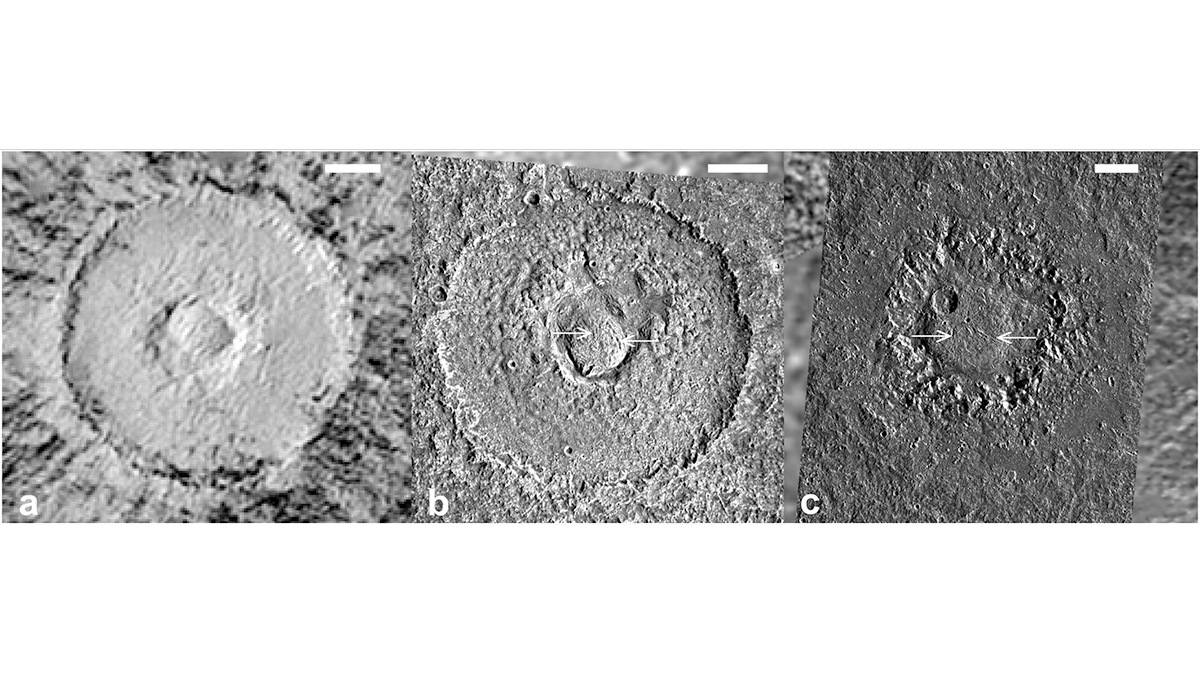A closer look at previously disregarded observations reveals stronger evidence that a deep ocean lies beneath Callisto’s icy surface.
Callisto
Posted inEditors' Highlights
Unveiling the Origins of Dome Craters on Ganymede and Callisto
Large craters with broad central domes are a unique crater morphology on Jupiter’s largest icy moons: Ganymede and Callisto. A new study examines how remnant impact heat may lead to their formation.
Posted inEditors' Highlights
Callisto’s H Corona: Offspring of the Surface or the Atmosphere?
The mostly unknown Callisto’s H corona is created by a global tenuous H2 atmosphere and not by surface water as previously believed, providing the first evidence for H2 in Callisto’s atmosphere.
Posted inNews
Jupiter’s Galilean Moons May Have Formed Slowly
A new model is the first to simultaneously explain many of the moons’ characteristics, including their mass, orbits, and icy composition




